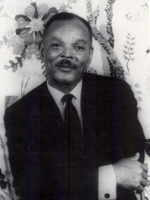Fort Davidson State Historic Site [MO]
In 1864, the Arcadia Valley was the scene of one of the largest and most hard-fought battles waged on the state's soil: the Battle of Pilot Knob. Confederate Maj. Gen. Sterling Price invaded Missouri from Arkansas, leading an army of 12,000 men. On Sept. 2627, 1864, while en route to the St. Louis area, Price attacked the weakly defended Union post of Fort Davidson at Pilot Knob. This proved to be a mistake. Fort Davidson was defended by a garrison of 1,450 men led by Gen. Thomas Ewing Jr., the brother-in-law of Gen. William Tecumseh Sherman. The Confederates lost nearly 1,000 men in attacking the small earthen fort and its 11 cannons. Today, the site preserves Fort Davidson and the Pilot Knob battlefield where so many Confederate and Union soldiers lost their lives. A visitor center interprets the battle and Maj. Gen. Price's raid. It features exhibits, a research library, an audiovisual presentation, and a fiber optics diorama of the battle.
The site offers a short films, exhibits, research library access, tours, occasional living history events, and occasional recreational and educational events.
